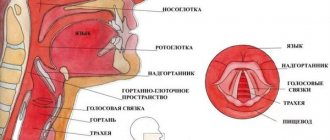B12 from Blagomin
Available in the form of capsules of 0.2 g. One jar contains 90 pieces. In addition to the main active ingredient, it contains gelatin and microcrystalline cellulose.
The intake is indicated to replenish the lack of cyanocobalamin in the body. Also contraindicated for pregnant and lactating women, persons with intolerance to substances from the composition.
The instructions prescribe taking one capsule once a day for a month. Allowed for teenagers over 14 years of age and adults. You can undergo treatment courses several times a year.
The price for a jar starts from 240 rubles, a prescription is not needed to purchase.
Who is prescribed
Taking vitamin D during pregnancy is recommended only in special cases; usually, a balanced diet is enough. It is usually prescribed to older people, often women, as a therapy for osteoporosis, or more precisely, for the prevention of osteoporotic fractures.
However, a meta-analysis of studies of this practice in nursing homes showed that many years of eating tablets with calcium and vitamin D does not prevent fractures, but on the contrary, it increases the incidence of heart attacks. Patients with osteoporosis rather lack elastic cartilage tissue on which calcium can settle and accumulate. When cartilage is worn away, this microelement only strengthens the bones, which become not only hard, but also fragile.
“Until the end of the twentieth century, vitamin D was used only in the treatment of rickets and osteoporosis,” recalls Vasily Vlasov. — Partly because we don’t know how to effectively treat osteoporosis with anything. Observations have proven that the number of fractures in older people does not decrease. If there is no real, vital need for vitamin D, no amount of it will improve your health. This situation is similar to the widespread use of multivitamins that has become fashionable. They are taken not for medical reasons, but for prevention, often without the participation of a doctor. Dosages, as in the case of vitamin D, are much lower than therapeutic ones. And the positive effect has also not been proven. But the market share is estimated in billions of dollars.”
Many developed countries solve the problem of vitamin D deficiency by enriching mass-market food products with it: milk, yoghurts and even wheat flour. In the USA and Canada, this began to be practiced back in the 1950s, and for a long time this requirement for manufacturers was in the nature of a legislative requirement. Similar programs are popular in Western European countries. In the UK, for example, it is predicted that adding 100 mcg of the vitamin (4000 IU) to 1 kg of flour will reduce the proportion of people with insufficient vitamin D intake from 93% to 50% over a short period of time.
What it is
Vitamin D is the collective name for a group of calciferols - fat-soluble organic compounds. For humans, the most significant active varieties are D2 - ergocalciferol, which enters the body only with food, and D3 - cholecalciferol, supplied both with food or supplements, and synthesized by skin cells in the light. Some researchers even find support for the hypothesis that vitamin D can be considered an indicator of impaired health and a potential universal remedy for its restoration.
Vitamin D is necessary for the complete absorption and assimilation of calcium, without which mineralization and bone growth are impossible. D also regulates the metabolic metabolism of phosphorus compounds and is involved in some other biochemical reactions, the research of which is ongoing.
“Vitamin D for the body is like gasoline for a motor,” explains endocrinologist Olga Shamrina. - In fact, it is a prohormone, it gives effects similar to hormonal ones. For example, it regulates the formation of the sex hormones testosterone and estrogen from cholesterol. Participates in the synthesis of thyroid hormones - the main anti-stress center of the body, responsible for reducing the perception of stress. Vitamin D corrects insulin levels in the blood, speeds up metabolism, promotes the absorption of beneficial elements from food and at the same time lose weight. It regulates all human life at the cellular level, including acting as an immunomodulator.”
Why do people decide that they need to take vitamins?
Nitrogenous organic substances, amines, necessary for life, which are not produced in the body, were once called vitamins. They were studied and it was determined which enzyme in the cell each of them provides. Signs of a deficiency of a particular vitamin in the diet were formulated: if, with a deficiency of a substance, symptoms of a specific disease appear, and after replenishing the amount of the vitamin they disappear, the disease is caused by a deficiency and fortification is a direct treatment. This was the case, for example, with vitamin C, which cures scurvy.
In the mid-twentieth century, the range of vitamins expanded, and at the same time a new concept emerged: even if a minor deficiency does not cause symptoms, a generous supplement of a vitamin to the body can improve well-being and have a beneficial effect on associated ailments. Numerous attempts to treat any disease with horse doses of vitamin C have not taken root in clinical practice. Vitamin A in large doses turned out to be simply toxic to the body.
“D is the only vitamin that has an effect on the immune system, and this has been confirmed in many studies,” says GMS Clinic allergist-immunologist Olga Sidorovich. — It’s the only vitamin I personally take from October to March. The effect of other vitamins in preventing colds, including vitamin C, which is widely used for this purpose, has not been proven.”
Doctors view vitamin D favorably mainly because in northern latitudes the vast majority of the population cannot obtain the amount of vitamin considered normal, either through food or sunlight. In the autumn-winter period, vitamin D deficiency becomes especially acute. A deficiency is considered to be less than 30 ng/ml.
Why is deficiency dangerous?
“Very often in winter and spring, patients come to a neurologist with muscle pain or incomprehensible fatigue,” confirms Varvara Khaletskaya, a neurologist at the Fantasy Children’s Clinic. — Upon examination, it turns out that the level of vitamin D is low. Although in the summer such patients sometimes come for appointments, so not everyone has this to do with the length of daylight hours.”
According to Olga Shamrina, over the past 8 years of practice, she has only twice received patients without vitamin D deficiency at all, and both times they were not Russians. In southerners, prolonged exposure to the sun causes tanning, in which the body slows down the synthesis of D3 to avoid overdose. Also, with age, the sensitivity of the receptors in the skin responsible for the absorption of vitamin D in the light decreases.
Vitamin D deficiency is critically dangerous in young children. This is the main reason for the development of rickets. Also, in case of deficiency, there is a high risk of developing respiratory infections, asthma, autoimmune diseases or developing insulin resistance. But this problem has now been reliably solved.
“For many years I have not seen children with rickets due to vitamin D deficiency,” says Vladimir Yagodkin, a pediatrician at the Fantasy clinic. — A sign that a child does not have enough vitamin D may be a fontanel that does not heal for a long time or a lack of hair on the back of the head. Nowadays, all babies starting from the age of one month are required to be given preventive doses of the vitamin in the form of oil drops. If there are any children left with a deficiency, it is perhaps in the remote wilderness or in third world countries. I myself take vitamin D for preventive purposes and advise all adults I know to do so.”
Olga Shamrina says that in the USA and Great Britain, most endocrinologists and general practitioners do not accept patients complaining of general poor health without testing for vitamin D. It is its results that are most important if the patient experiences fatigue, decreased muscle tone, weather sensitivity or increased stress load. The analysis itself is quite expensive and is not included in the regulations for the provision of free medical care.
“The analysis is needed so that the doctor can prescribe the correct form and individual dosage of external vitamin D,” adds Dr. Shamrina. — It depends on the function of the parathyroid gland, age, excess weight. After all, vitamin D can accumulate in adipose tissue and not work, so obese people require a larger dosage. In those suffering from gastritis or gastroduodenitis, the vitamin may not be absorbed in the gastrointestinal tract. One of my 78-year-old patients with abnormal parathyroid hormone function received vitamin D in fat-soluble form for a long time without any benefit. After replacing it with a water-soluble form, which is metabolized by the kidneys, my health immediately improved.”







